Create a custom look for any books using spray paint and a stencil! This detailed tutorial will walk you through my tips and tricks to spray book edges perfectly so you can customize your bookshelf!
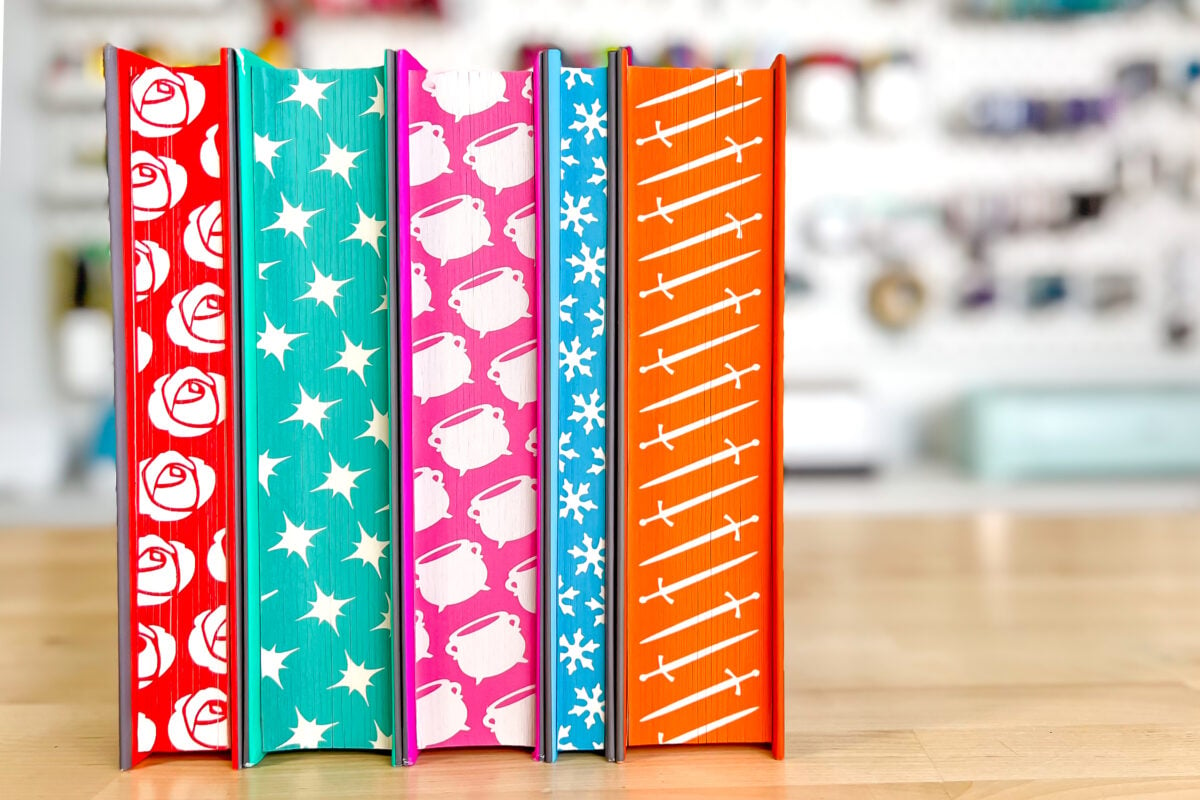
If you’ve been down the Booktok / Bookstagram rabbit hole lately, you’ve probably seen sprayed book edges adorning bookshelves everywhere. Many of the more popular fantasy novels (looking at you, Fourth Wing and Iron Flame) have special editions with sprayed edges that people (including me!) are going crazy for.
There are edges that are simply one sprayed color or a mix of colors (most using airbrushing). And then there are more complex images that people have painted by hand or created with stencils—which is what we’re going to tackle in today’s post! You can also use this post to simply spray your edges without a stencil—just skip down to that part of the tutorial.
I grabbed my set of ACOTAR (A Court of Thorn and Roses and the subsequent books in the series) and decided to give it a try! I have a free download for this set of books below so you can make this exact project. If you have other books you’d like to see stencils for, let me know and I may add them to my shop!
Spraying book edges is definitely an intermediate project. If you’re brand new to the Cricut, this probably shouldn’t be your first project. You want to be very comfortable with using vinyl and transfer tape, as well as using spray paint, before you begin.
Even I’ll admit it was a bit nerve-wracking. These hardback books aren’t cheap! However, the results were pretty amazing and since I’ve done all five books, I’ve found the process and materials that seem to work the best.
Watch the Video
Because this is a pretty complex project, check out my full video by clicking play below! Or read on to get the full written tutorial.
What Kind of Vinyl to Use
I tested both removable and permanent vinyl for my stencil. The permanent vinyl was much harder to remove from the painted book pages. The removable vinyl peeled up easily and still had nice, crisp edges.
So I highly recommend a removable vinyl like Oracal 631 to create the stencil for your sprayed book edges.
What Supplies Do I Need to Spray Book Edges
Get everything you need to spray your book edges in my Amazon Store!
Here are the supplies I used to spray the edges of my books.
- Cricut or other electronic cutting machine
- Removable adhesive vinyl*
- Green StandardGrip mat
- Weeding hook
- Transfer tape
- Scraper
- Montana Gold Spray Paint*
- Red: S3000 Shock Red
- Teal: G6130 Malachite
- Pink:
- Blue:
- Orange: CL2130 Shrimp Dark
- Clamps*
- Wooden blocks
- Brown paper wrapping*
- Scissors
- Painter’s tape*
* Material Notes
- Removable vinyl worked better for me than permanent. It was much easier to remove.
- Choose a satin or matte spray paint, not a glossy spray paint.
- I used quick-release clamps but you can use c-clamps as well.
- For the recycled paper you can use paper bags, but I found that the brown paper wrapping that comes inside Amazon boxes worked really well and is more flexible than paper bags.
- I used regular masking tape in my photos below, but found it actually pulled up at the inside of the covers so I used painter’s tape for the other books and it worked better.
Get the Free File
Want access to this free file? Join my FREE craft library! All you need is the password to get in, which you can get by filling out the form below. The file number is: C481.
Prep a Book for Sprayed Edges
For this project, I am spraying the edges of A Court of Mist and Fury (the second book in the A Court of Thorn and Roses series by Sarah J. Mass—I did the first book in my video above!). I chose to do the hardback editions because they are sturdier and I thought I could get the cleanest results. I have seen people do paperbacks as well, but the covers tend to ripple a bit.
Select your spray paint colors. I recommend using a satin/matte spray paint versus a glossy one—I think the ingredients in a gloss spray paint may cause the pages to stick more. Montana Gold spray paint is my favorite and it’s satin and it comes in a ton of colors so no matter what book you are spraying, there will be a color that works.
Remove the book jacket so you have only the hardback book.

Then use your recycled paper to cover the entire book. Be sure to cover and tape the front, back, and spine of the book very tightly. You don’t want paint to seep into any crevices and get on your book! I used recycled brown paper packing sheets and painter’s tape in order to do this. Do you remember covering textbooks in school? That’s sort of what this felt like!
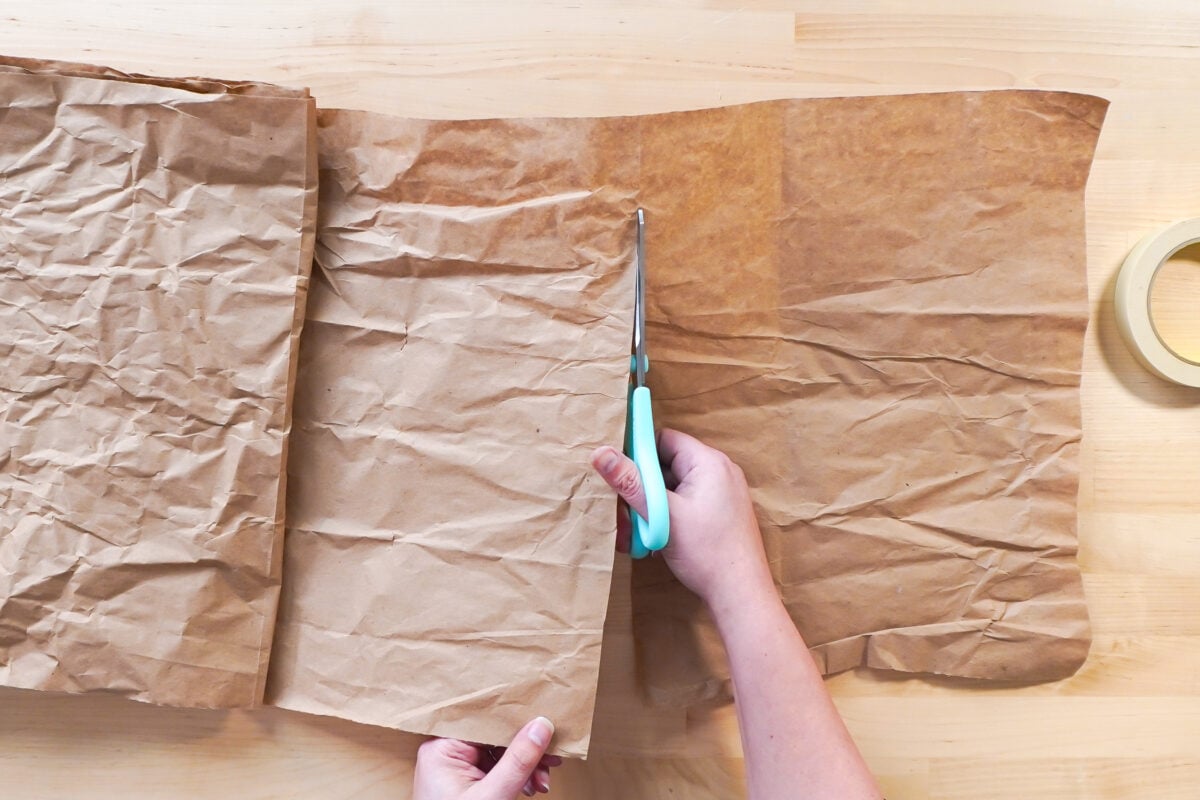
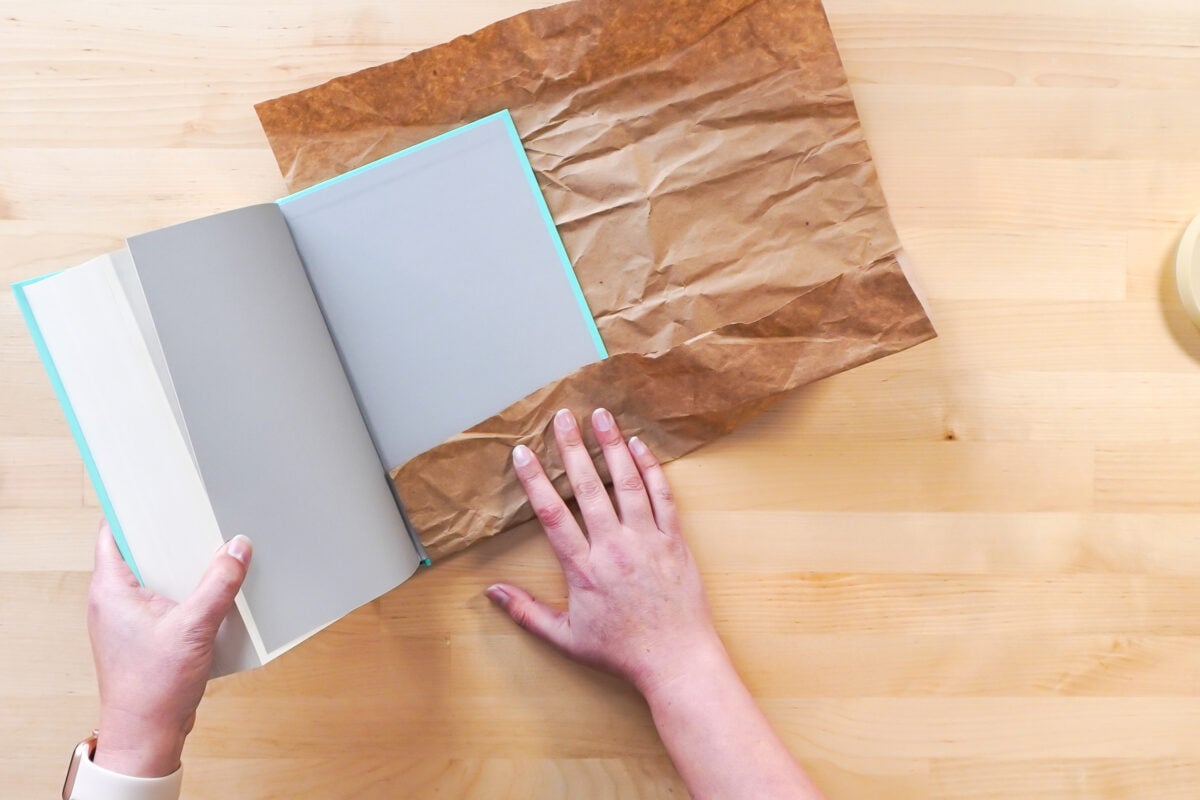
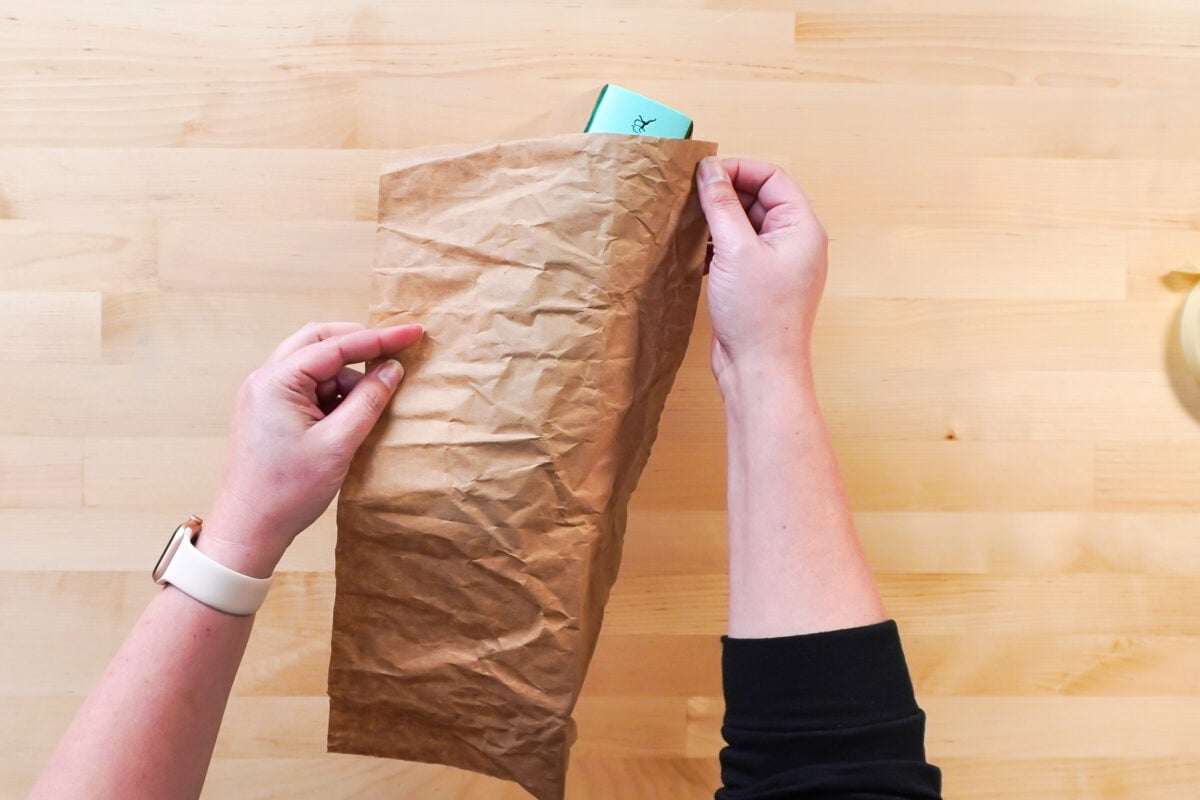
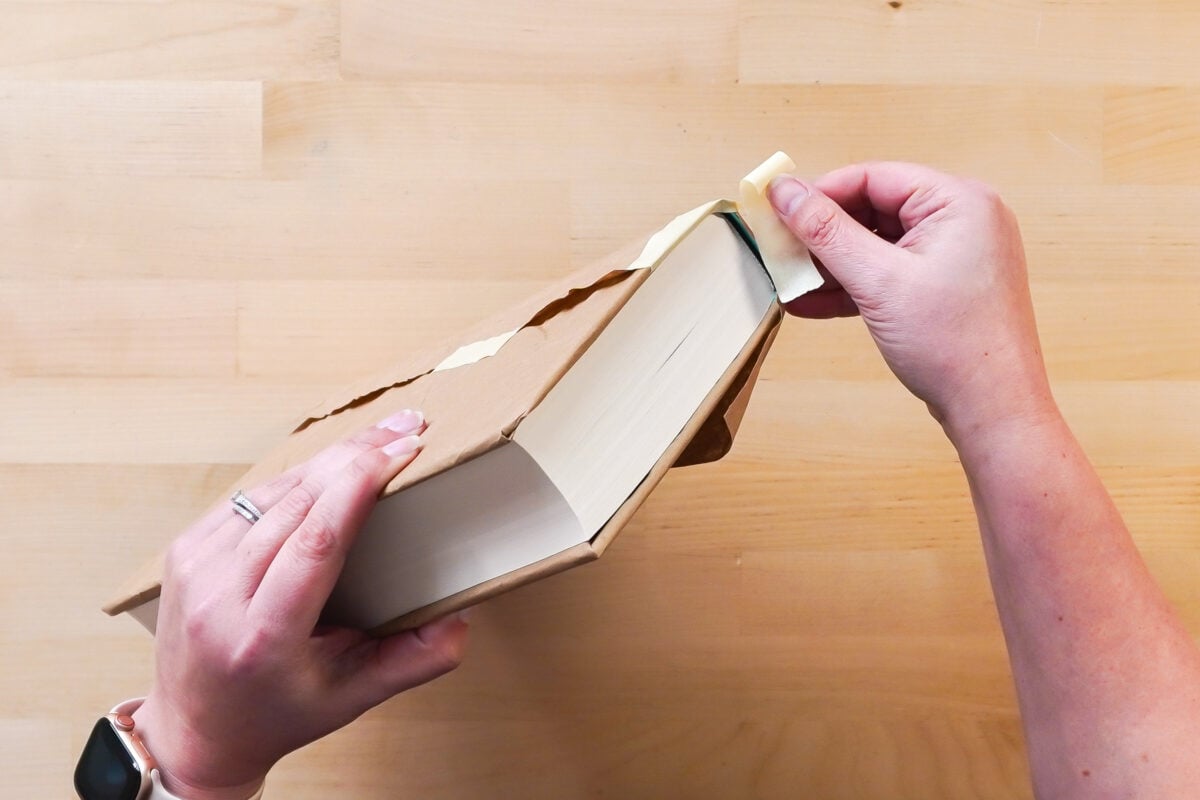
Now, you’ll need to create a book press. I used 4″ ratcheting quick-release clamps and two pieces of scrap wood. I suggest wood rather than cardboard because it helps compress the entire book, plus it really protects your book from clamp marks. I’ve seen other people use cardboard, but I found the clamping is more successful with wood.

At first I wanted to wrap my clamps in plastic so they wouldn’t get any spray paint on them, but I got over that pretty quick. They just get a bit of overspray but as long as you’re not spraying a ton of paint into the ratcheting mechanism, I think you’re fine without covering the clamps.
Make sure to tighten your clamps as tight as you can get them. You want the book pressed together tightly and evenly so no paint leaks through the pages.
Once your book is fully clamped together, measure the length and width of your book pages. If you decide to also do a book from the ACOTAR series and use my SVG, I have created the cut file to be the correct size of the book. If you are adding your own design, be sure it is the correct size. I made my designs slightly smaller than the length and width of the pages so nothing gets cut off in the painting process.
How to Cut Your Vinyl Stencil
Let’s make the stencil you’ll use for your book! Start by opening Cricut Design Space. For this project, I’m using my ACOTAR-themed file.
To begin, create a new project in Cricut Design Space. Then click Upload in the Design Panel on the left.
You’ll be taken to the upload screen where you can navigate to the file you want to upload. If you need more help with SVG files, see my post How to Upload an SVG to Cricut Design Space.
Insert your file onto your canvas.

Hide any stencils you are not using. If you’re using my file for your ACOTAR hardcover books, there is no need to resize.
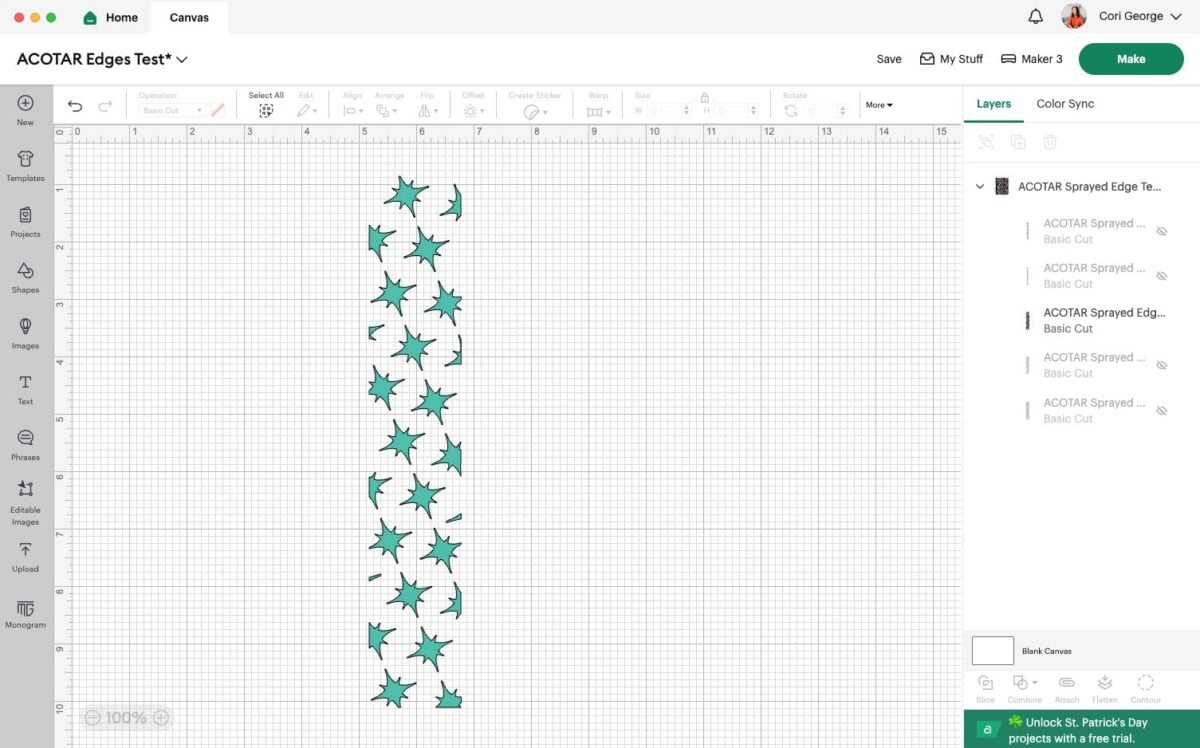
You’re ready to cut your image! Click Make It in the upper right. In the Load Mat screen, choose On Mat (unless you are using removable Smart Vinyl, then choose Without Mat). Click Confirm.

Then you’ll be taken taken to the Prepare Screen. I rotated my stencil so it cut at the top of my mat.
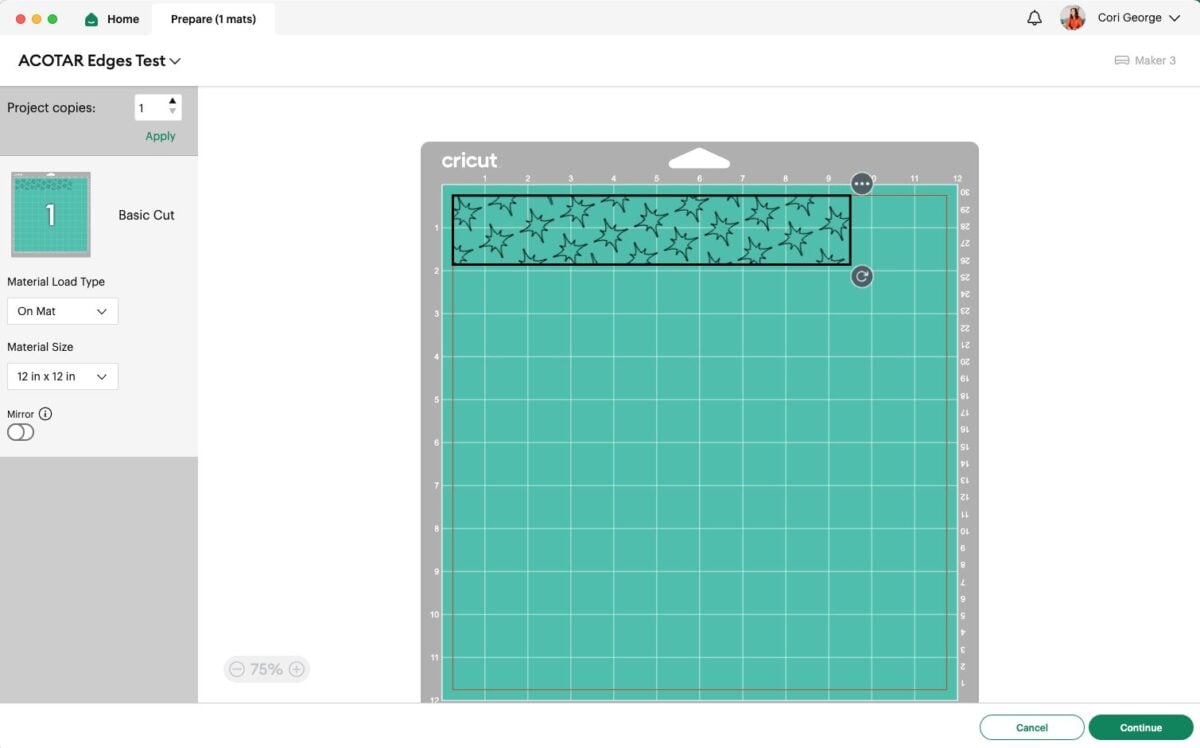
Once your mat looks good, click Continue. Then in the Make Screen, choose your material. In this case, I chose removable vinyl.
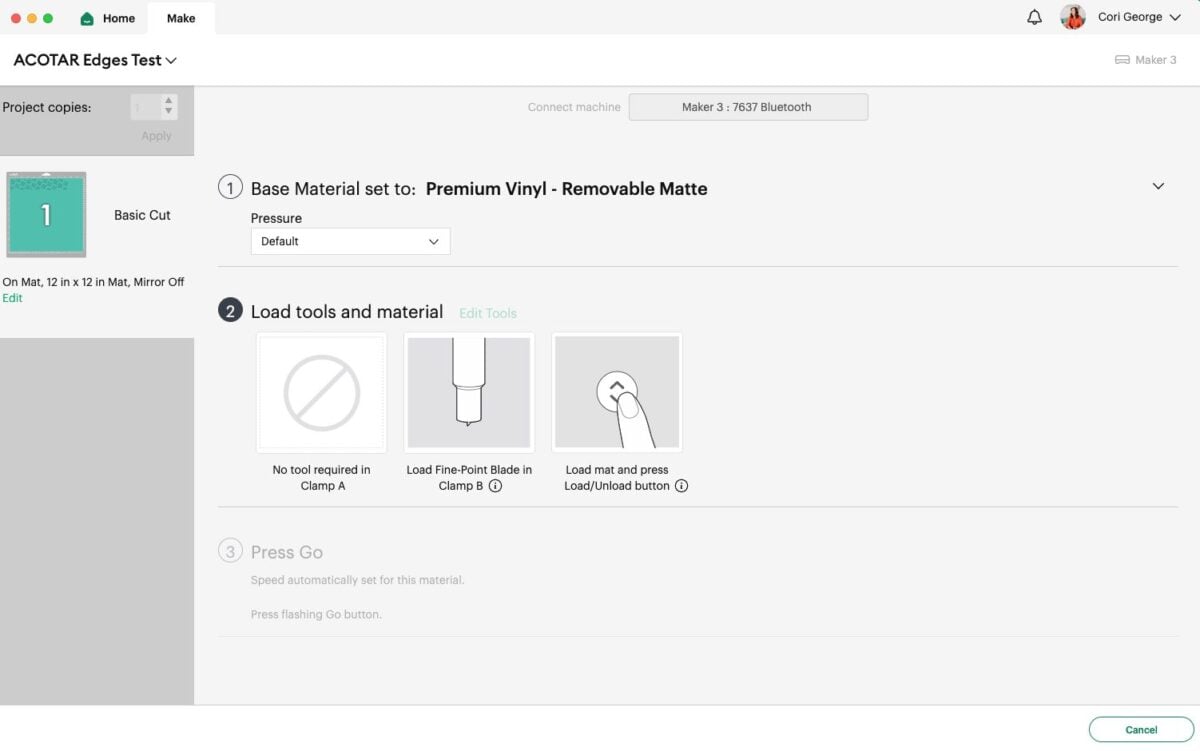
Insert your mat into your machine and your Cricut will cut your project!
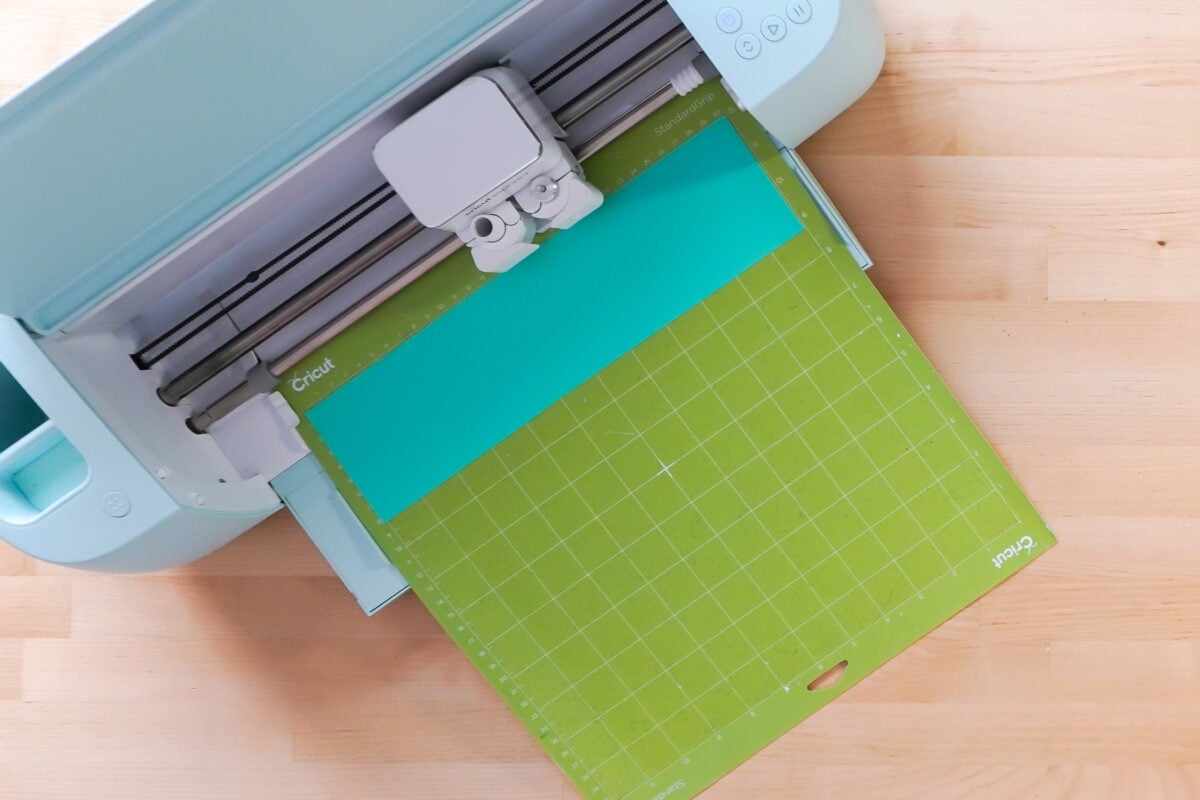
Once your vinyl is cut, use your weeding hook to remove the excess vinyl.
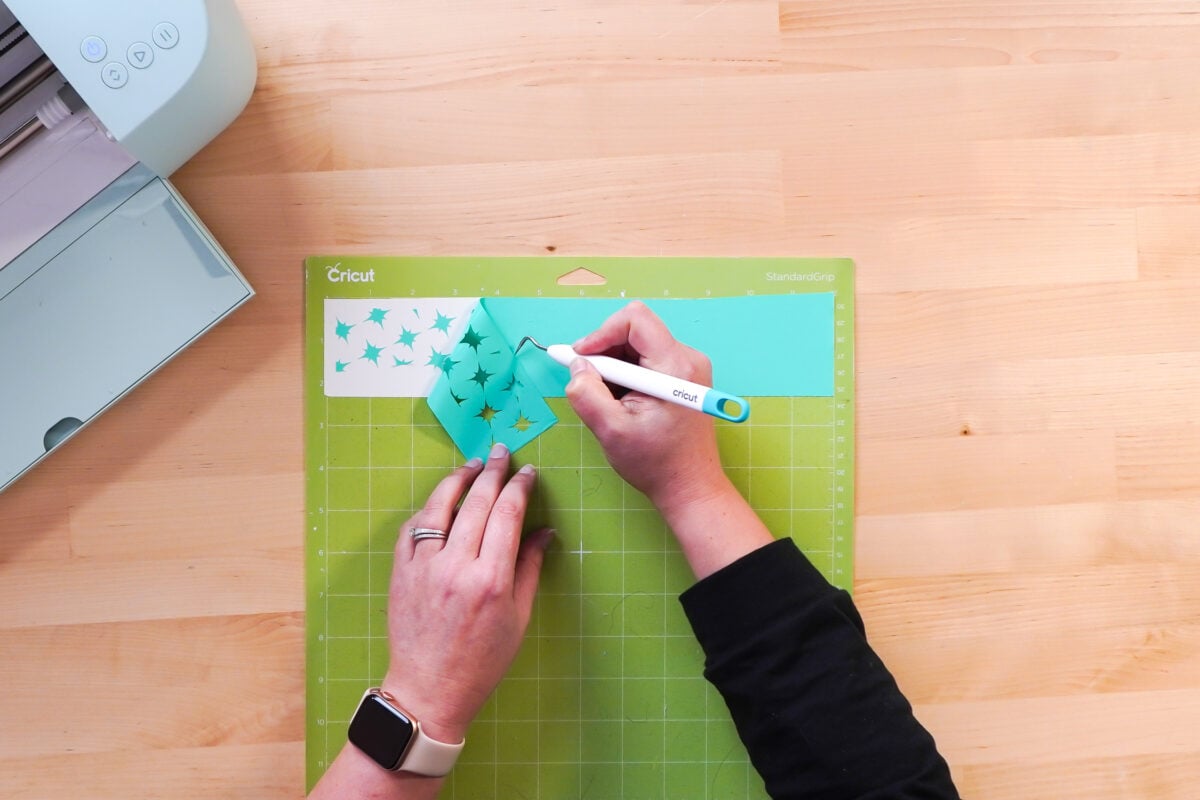
Place your transfer tape on top of the vinyl. Use your scraping tool to burnish the vinyl onto the transfer tape.

Peel back the transfer tape to lift your vinyl design.
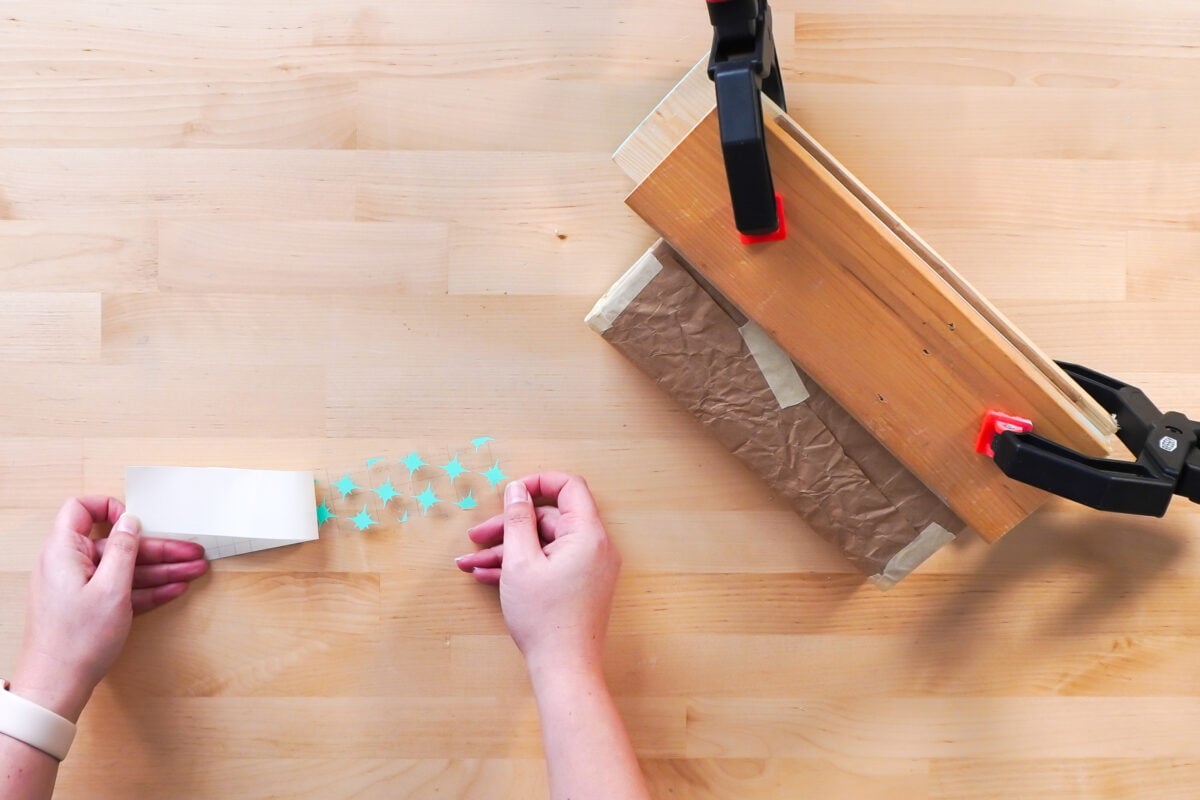
Now you’re ready to start the process of painting your book pages!
How to Spray the Edges of a Book
Now you can apply your stencil to your book pages. Carefully place the transfer tape with the design along the page edges of your book.
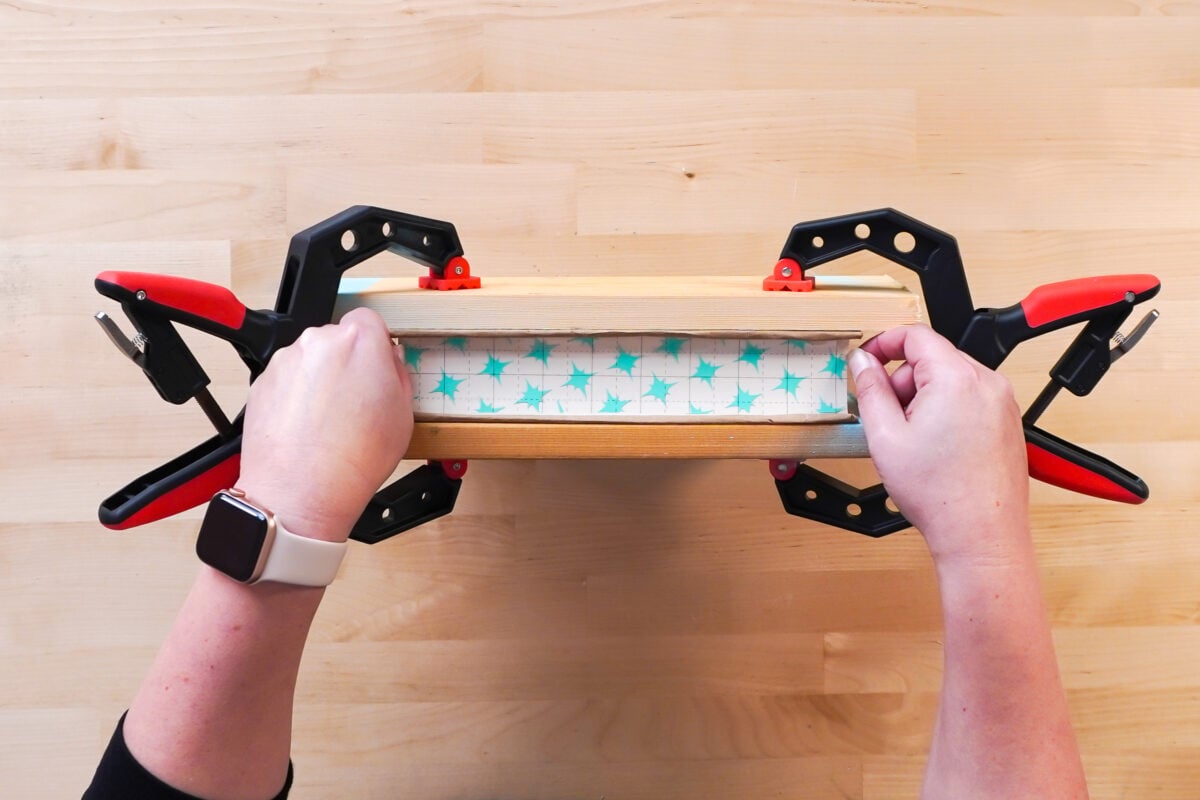
Use a scraping tool to press the design to the pages. You want it pressed down really well!
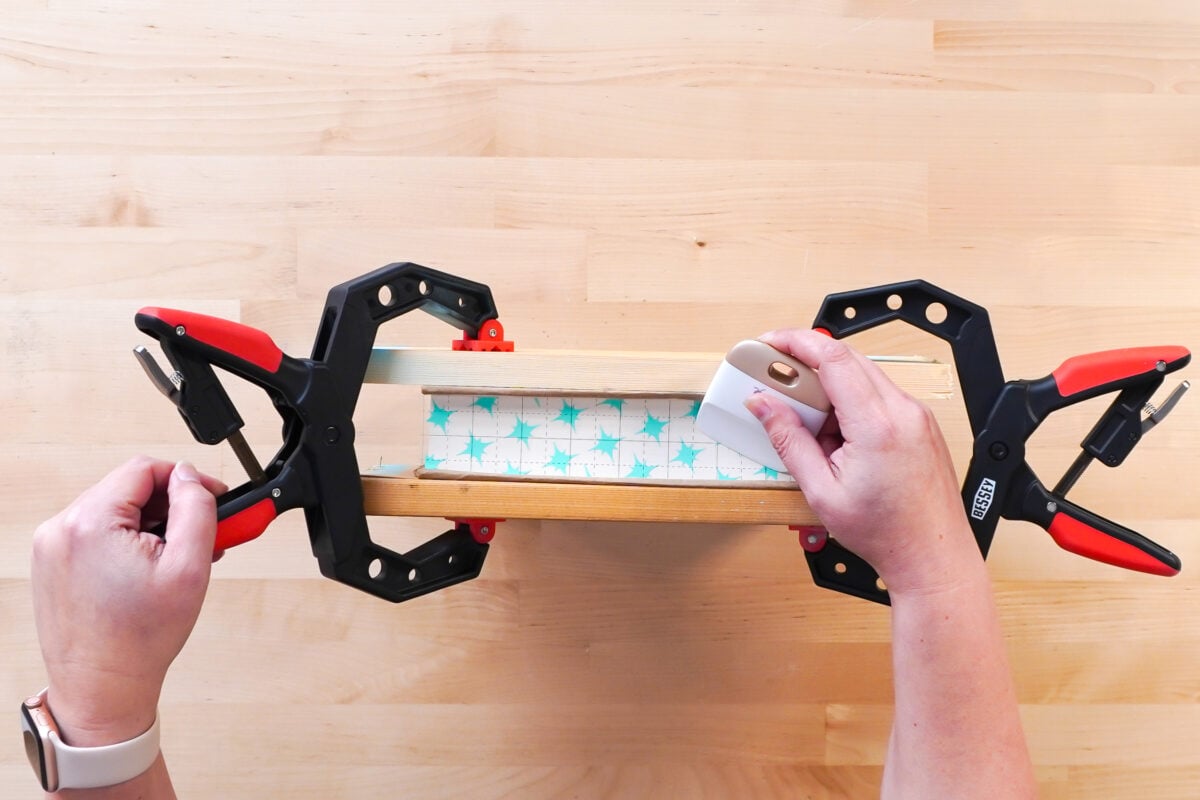
Now, peel back the transfer tape. The vinyl left on the book will be your stencil. I was worried it wouldn’t stick, but overall I had pretty good luck. If any of the pieces pull up, carefully place them with tweezers and make sure they are pressed into the pages well.
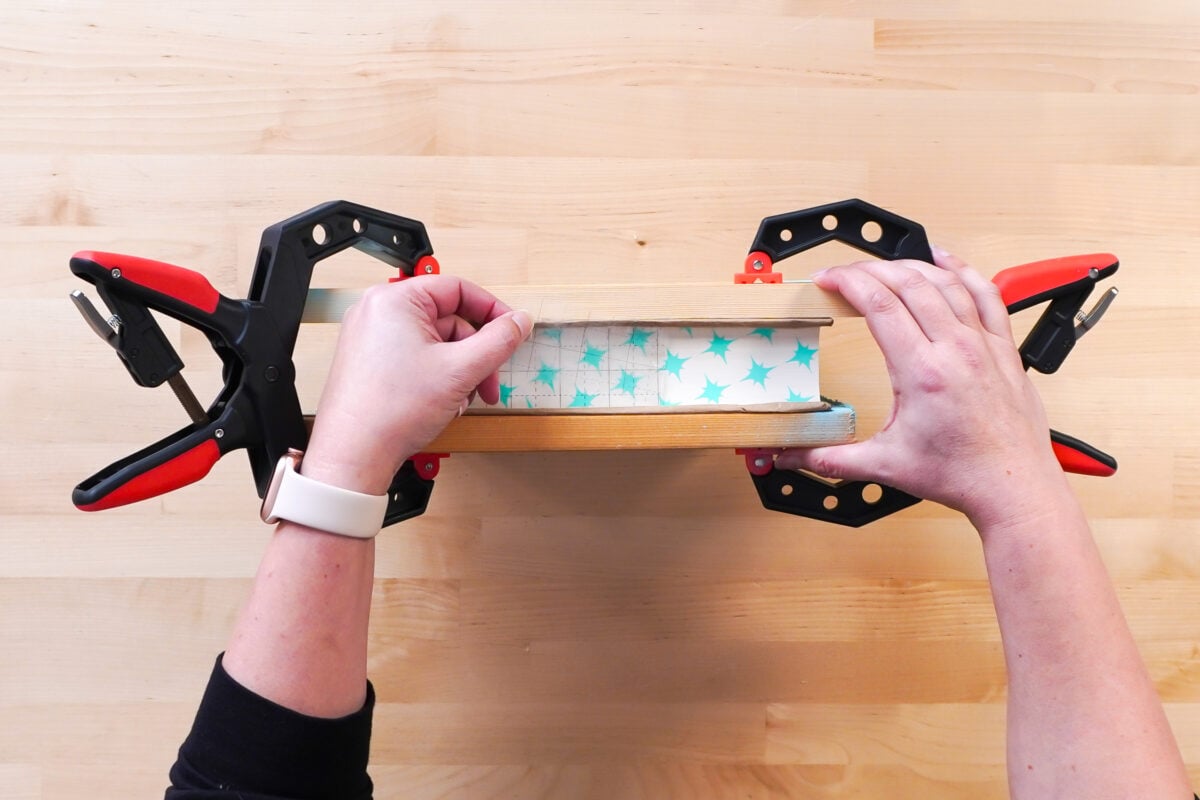
Be sure you’re in a well-ventilated area to spray paint. Begin with very light, even coats of spray paint. I like to spray about 6 inches away from the book and make fairly quick back and forth motions. Do this 5-6 times until you feel there’s a nice, even coat. You do NOT want to soak the pages—use more light coats vs. fewer heavy coats.
Also rotate the book and spray the top and bottom edges as well (some people stencil these too, which is an option!).
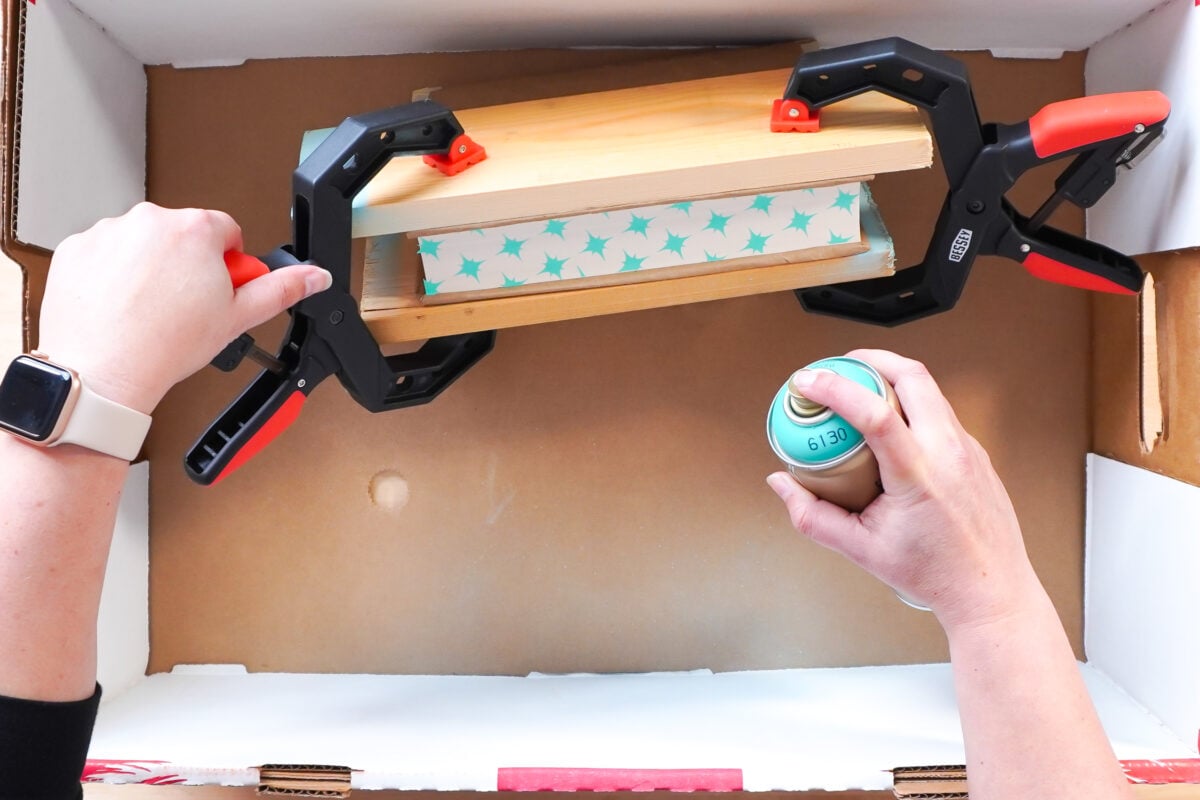
Let this first coat dry for 25-30 minutes. Take a peek at your pages and determine if you need another coat. I added a second coat for a deeper color and to be sure I got in all the crevices of the book edge. Again, use a very light hand and don’t oversaturate!
Let this second coat dry for at least 4-5 hours. You should have really nice coverage on the book edges.
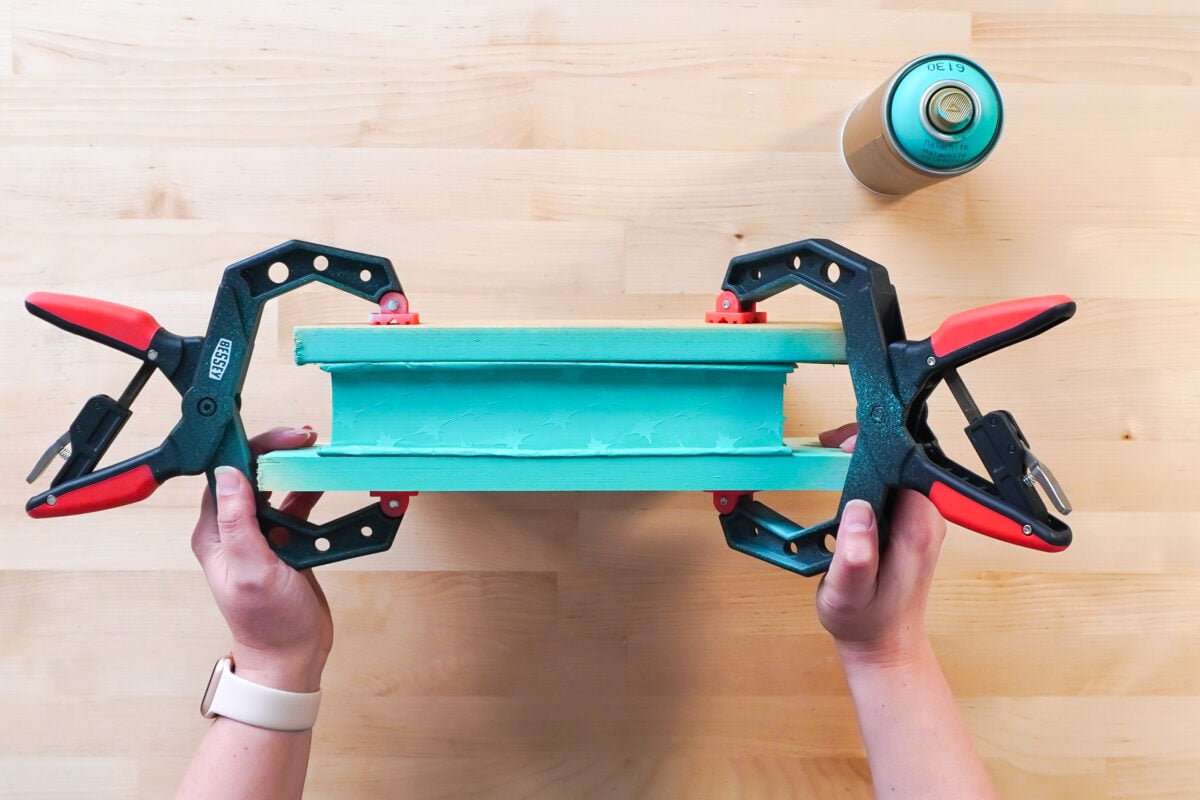
Once you’re sure the paint is dry, use your weeding tool and tweezers to remove the vinyl from your pages. I did this with all five books and every time I was like oh my goodness, this is GORGEOUS! You really do get a nice crisp edge when you have your book properly clamped.
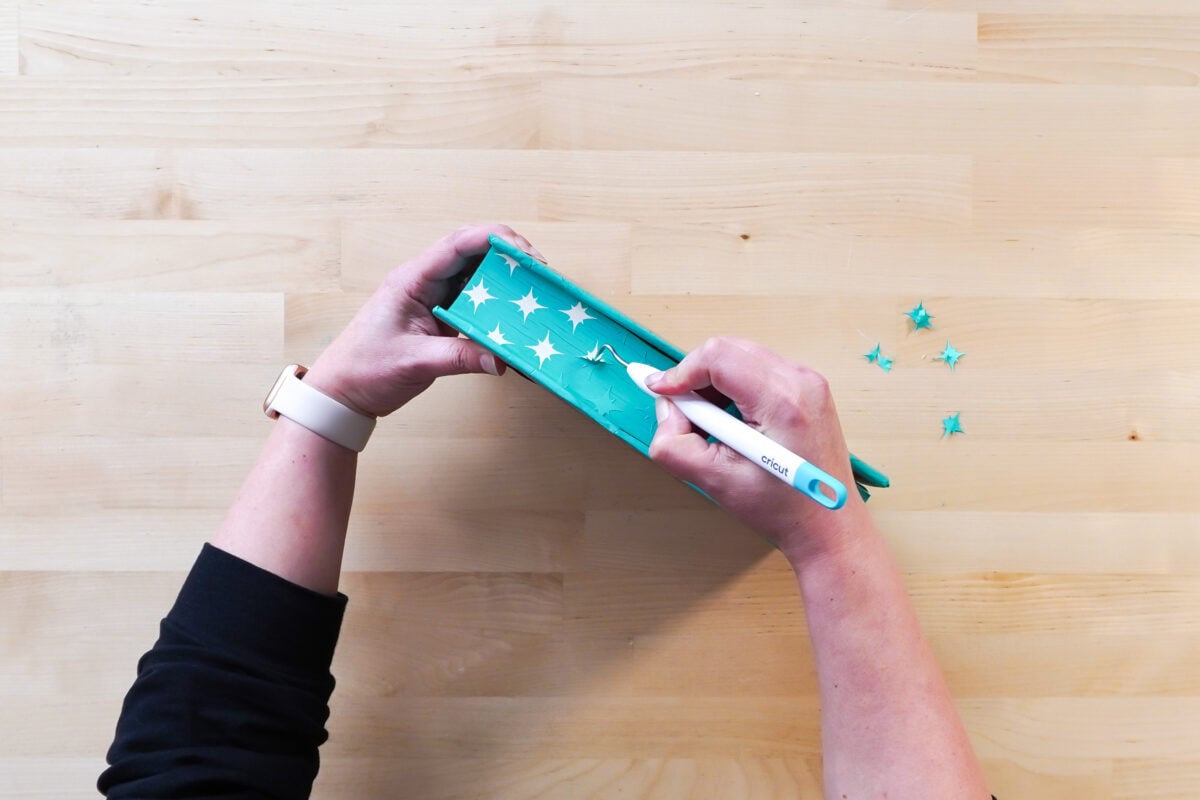
Do not fan the pages for at least 24 hours. If you separate the pages or fan them, you run the risk of the paint flaking off and looking uneven. You may have some pages that are a bit stuck together, but take care to peel them apart and your book should look just as good as it did when you first spray painted it!
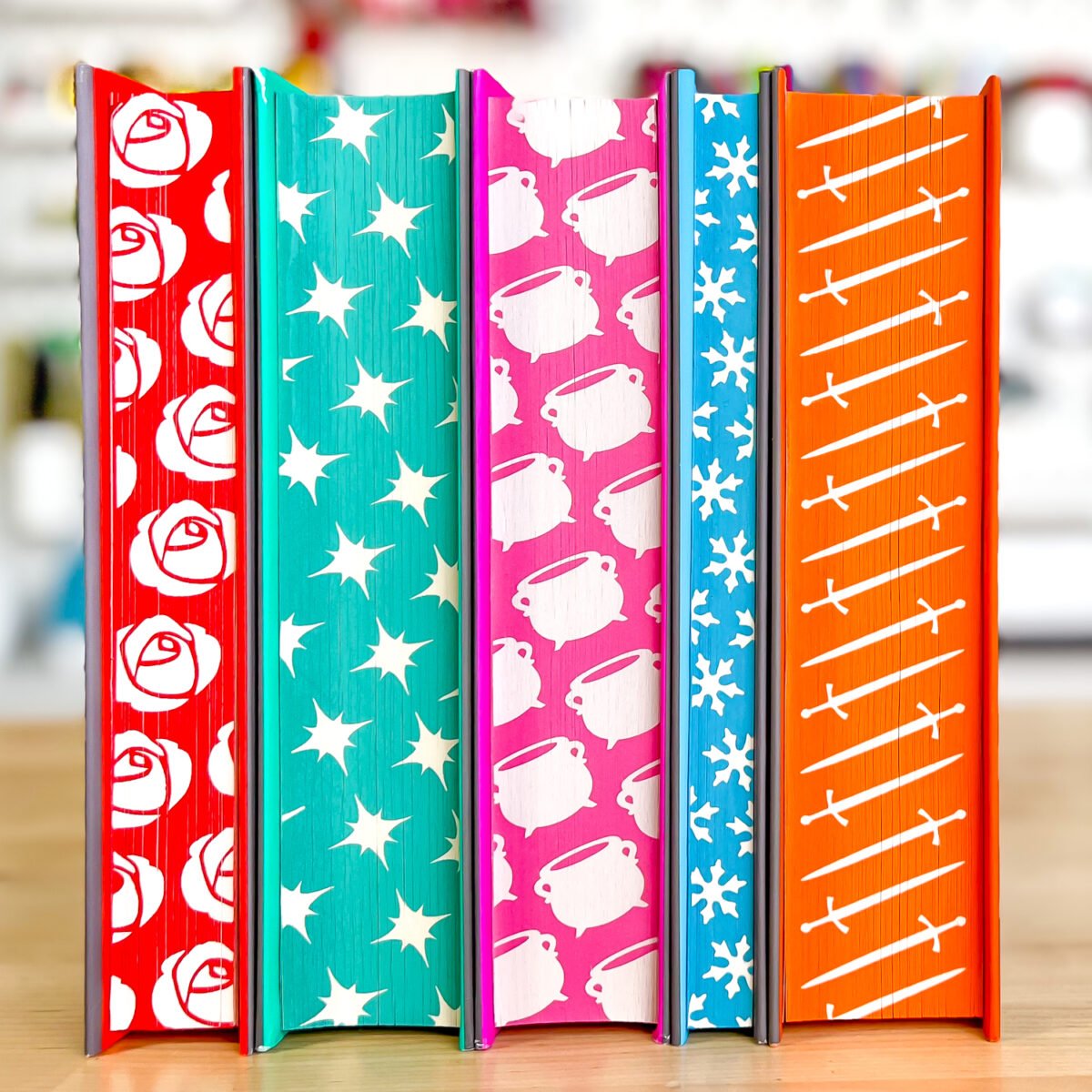
I hope you enjoyed this tutorial to spray book edges! Let me know if you try it out!
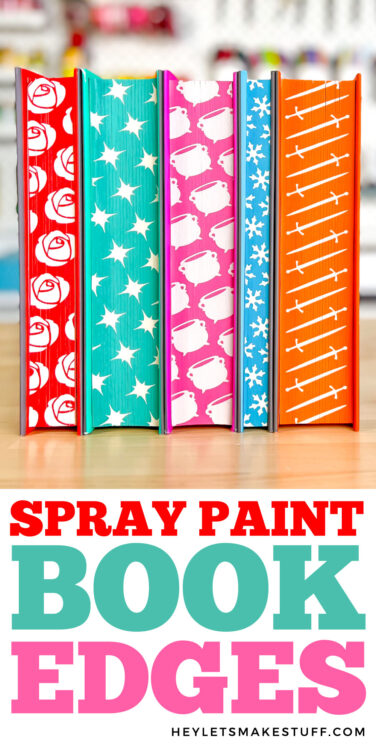
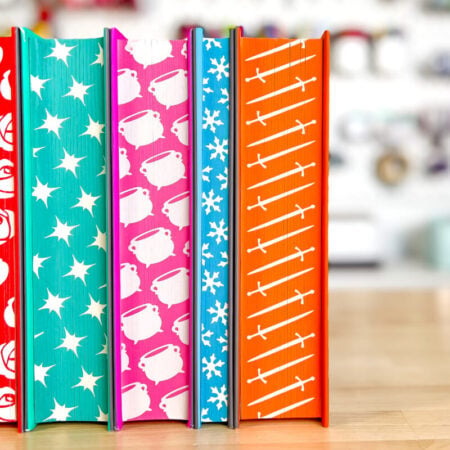
SPRAYING BOOK EDGES USING A STENCIL
Equipment
- Cricut or other electronic cutting machine
Supplies
- Removable adhesive vinyl*
- Green StandardGrip mat
- Weeding hook
- Transfer tape
- Scraper
- Montana Gold Spray Paint* Red: S3000 Shock Red – Teal: G6130 Malachite – Pink: – Blue: – Orange: CL2130 Shrimp Dark
- Clamps*
- Wooden blocks
- Brown paper wrapping*
- Scissors
- Painter's tape*
- Free ACOTAR Stencil SVG #C481
Instructions
- * Material Notes*Removable vinyl worked better for than permanent and it was much easier to remove.*Choose a satin or matte spray paint, not a glossy spray paint.*Used quick-release clamps but you can use c-clamps as well.*For the recycled paper you can use paper bags, but the brown paper wrapping that comes inside Amazon boxes worked really well and is more flexible than paper bags.*Can use regular masking tape but it actually pulls up at the inside of the covers, so recommend painter's tape as it works better.Prep a Book for Sprayed EdgesChoose hardback editions because they are sturdier and get the cleanest results. Some people do paperbacks as well, but the covers tend to ripple a bit.Select your spray paint colors. Recommend using a satin/matte spray paint versus a glossy one, as the ingredients in a gloss spray paint may cause the pages to stick more. Montana Gold spray paint a favorite and it's satin and it comes in a ton of colors so no matter what book you are spraying, there will be a color that works.
- Remove the book jacket so you have only the hardback book

- Then use your recycled paper to cover the entire book. Be sure to cover and tape the front, back, and spine of the book very tightly. You don't want paint to seep into any crevices and get on your book! Recommend using recycled brown paper packing sheets and painter's tape in order to do this.

- Now, you'll need to create a book press. 4" ratcheting quick-release clamps and two pieces of scrap wood were used to do this. Wood is suggested rather than cardboard because it helps compress the entire book, plus it really protects your book from clamp marks. Other people use cardboard, but the clamping is more successful with wood.

- You might want to wrap the clamps in plastic so they won't get any spray paint on them, but it was not done for this project. They get a bit of overspray but as long as you're not spraying a ton of paint into the ratcheting mechanism, you're fine without covering the clamps.Make sure to tighten your clamps as tight as you can get them. You want the book pressed together tightly and evenly so no paint leaks through the pages. Once your book is fully clamped together, measure the length and width of your book pages. If you decide to also do a book from the ACOTAR series that was used for this project and use the free SVG, the cut file is the correct size of that book series. If you are adding your own design, be sure it is the correct size. The free designs are slightly smaller than the length and width of the pages so nothing gets cut off in the painting process.
- How to Cut Your Vinyl StencilLet’s make the stencil you'll use for your book! Start by opening Cricut Design Space. For this project, the ACOTAR-themed file was used.To begin, create a new project in Cricut Design Space. Then click Upload in the Design Panel on the left.You’ll be taken to the upload screen where you can navigate to the file you want to upload. If you need more help with SVG files, see this post How to Upload an SVG to Cricut Design Space.Insert your file onto your canvas.

- Hide any stencils you are not using. If you're using the free file for your ACOTAR hardcover books, there is no need to resize.

- You're ready to cut your image! Click Make It in the upper right. In the Load Mat screen, choose On Mat (unless you are using removable Smart Vinyl, then choose Without Mat). Click Confirm.

- Then you'll be taken taken to the Prepare Screen. Rotate the stencil so it cuts at the top of the mat.

- Once your mat looks good, click Continue. Then in the Make Screen, choose your material. In this case, I chose removable vinyl.

- Insert your mat into your machine and your Cricut will cut your project!

- Once your vinyl is cut, use your weeding hook to remove the excess vinyl.

- Place your transfer tape on top of the vinyl. Use your scraping tool to burnish the vinyl onto the transfer tape.

- Peel back the transfer tape to lift your vinyl design.Now you're ready to start the process of painting your book pages!

- How to Spray the Edges of a BookNow apply your stencil to your book pages. Carefully place the transfer tape with the design along the page edges of your book.

- Use a scraping tool to press the design to the pages. You want it pressed down really well!

- Now, peel back the transfer tape. The vinyl left on the book will be your stencil. If any of the pieces pull up, carefully place them with tweezers and make sure they are pressed into the pages well.

- Be sure you're in a well-ventilated area to spray paint. Begin with very light, even coats of spray paint. Spray about 6 inches away from the book and make fairly quick back and forth motions. Do this 5-6 times until you feel there's a nice, even coat. You do NOT want to soak the pages—use more light coats vs. fewer heavy coats.Also rotate the book and spray the top and bottom edges as well (some people stencil these too, which is an option!).

- Let this first coat dry for 25-30 minutes. Take a peek at your pages and determine if you need another coat. I added a second coat for a deeper color and to be sure I got in all the crevices of the book edge. Again, use a very light hand and don't oversaturate!Let this second coat dry for at least 4-5 hours. You should have really nice coverage on the book edges.

- Once you're sure the paint is dry, use your weeding tool and tweezers to remove the vinyl from your pages. You really do get a nice crisp edge when you have your book properly clamped.

- Do not fan the pages for at least 24 hours. If you separate the pages or fan them, you run the risk of the paint flaking off and looking uneven. You may have some pages that are a bit stuck together, but take care to peel them apart and your book should look just as good as it did when you first spray painted it!GORGEOUS!

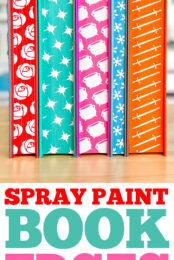
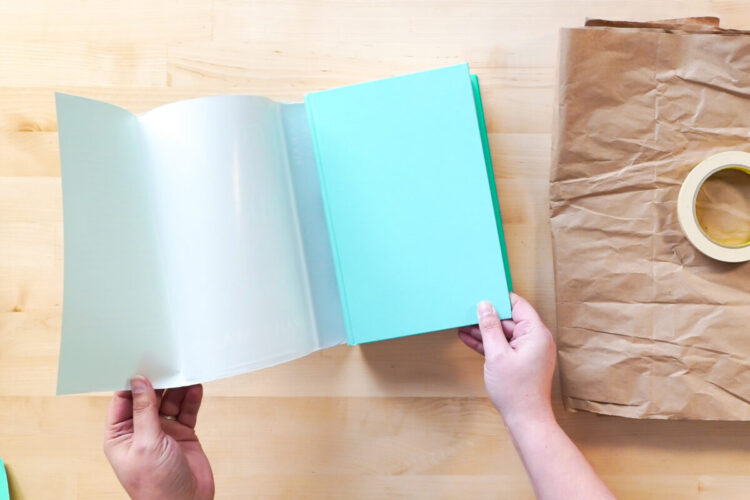
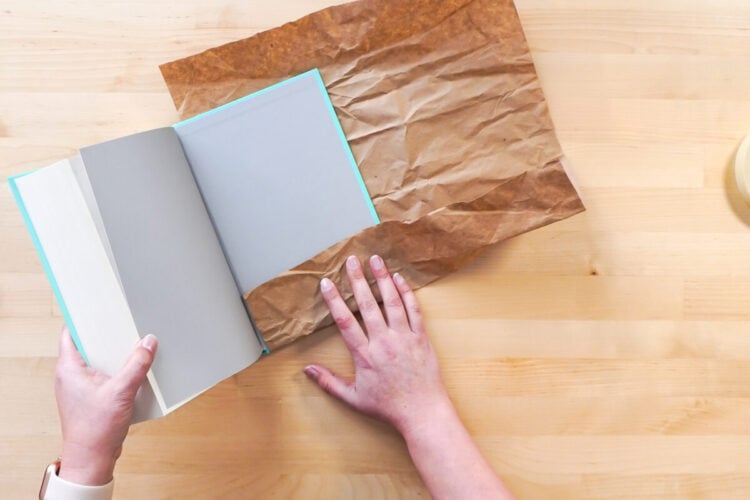
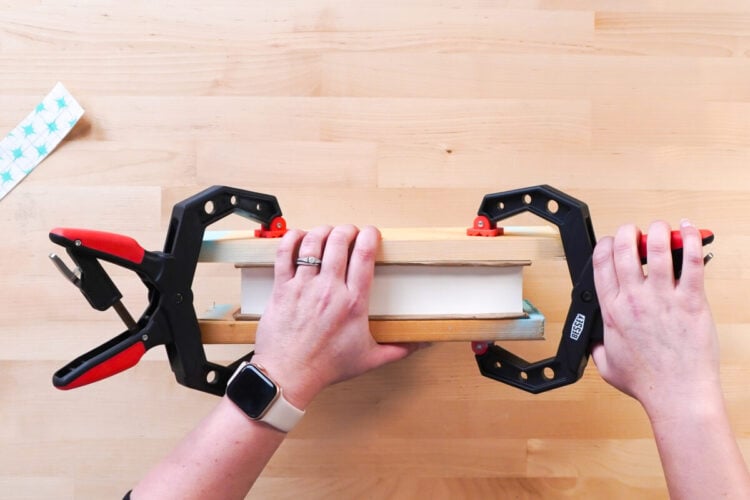
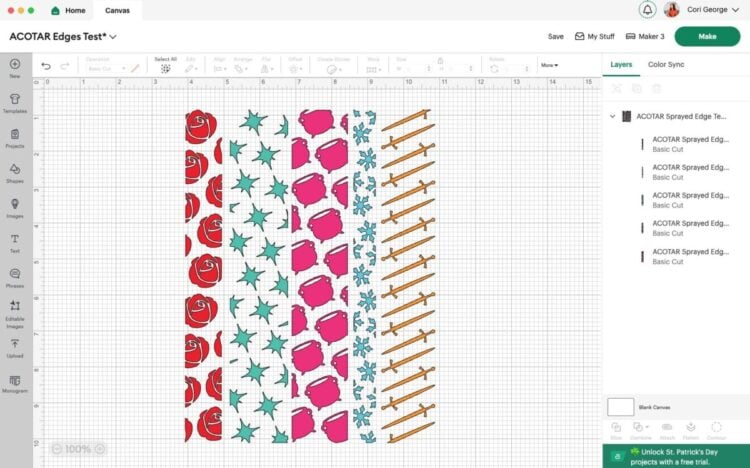

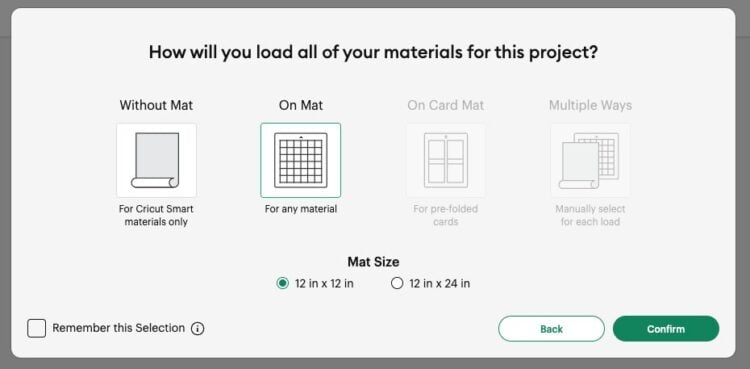
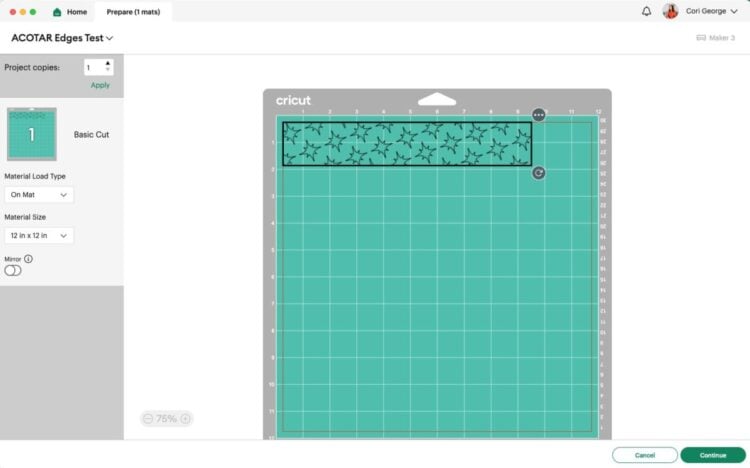
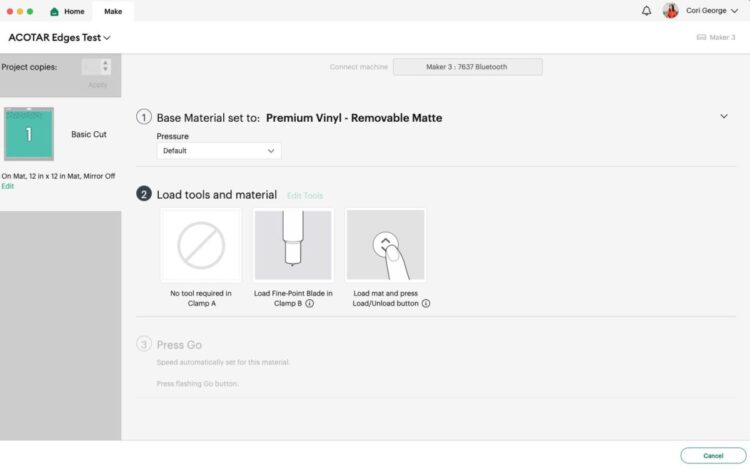


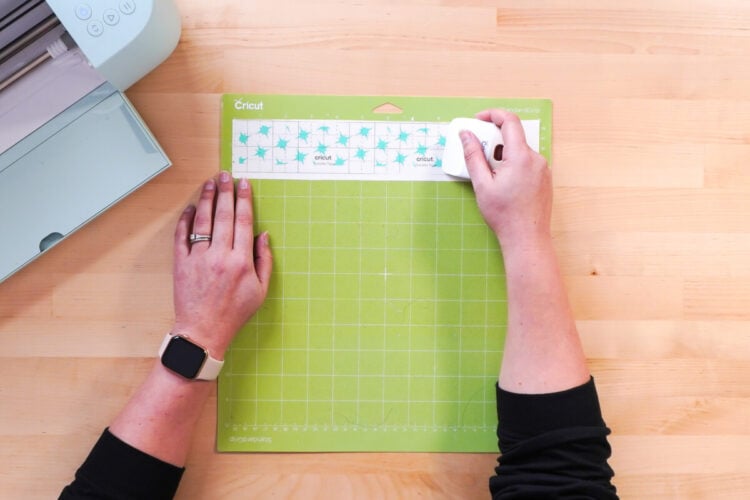

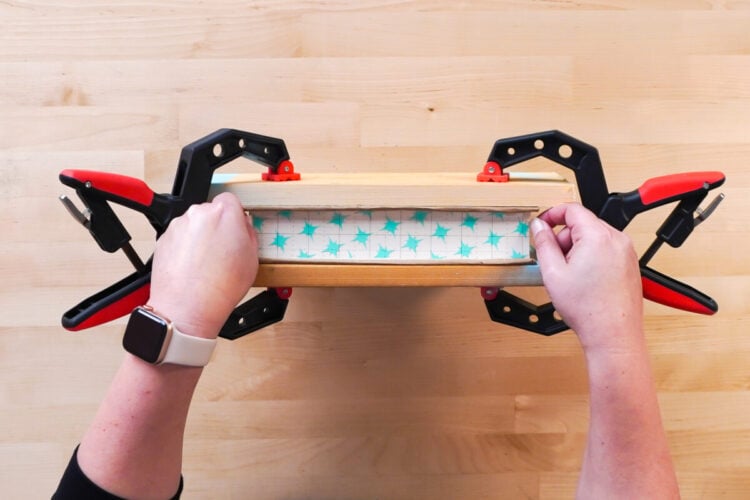

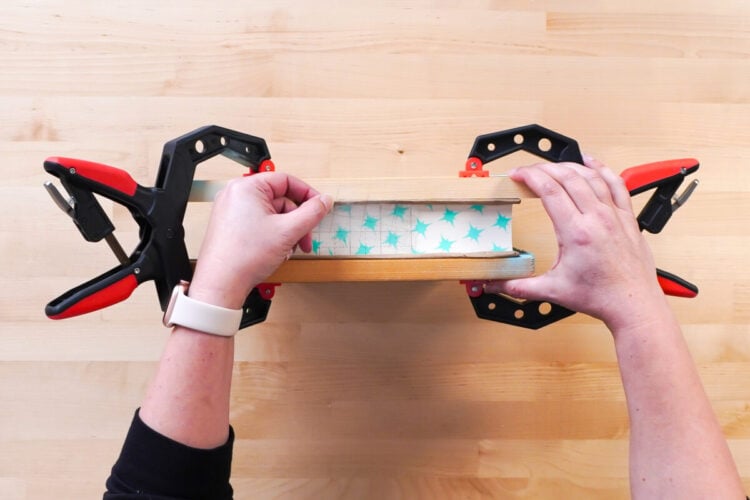
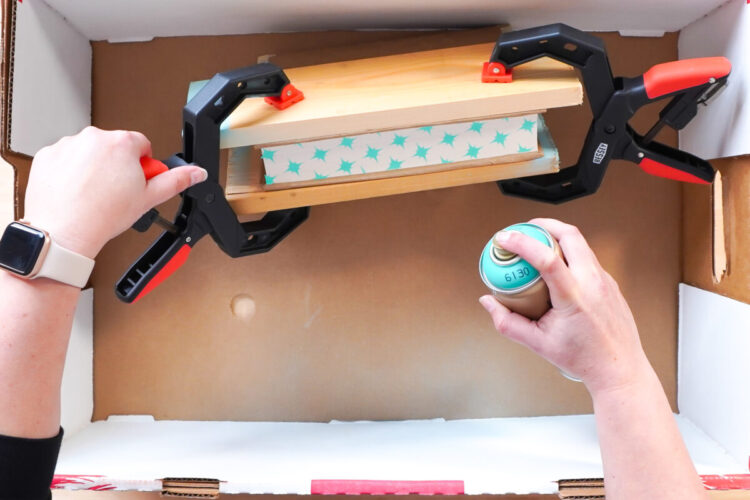
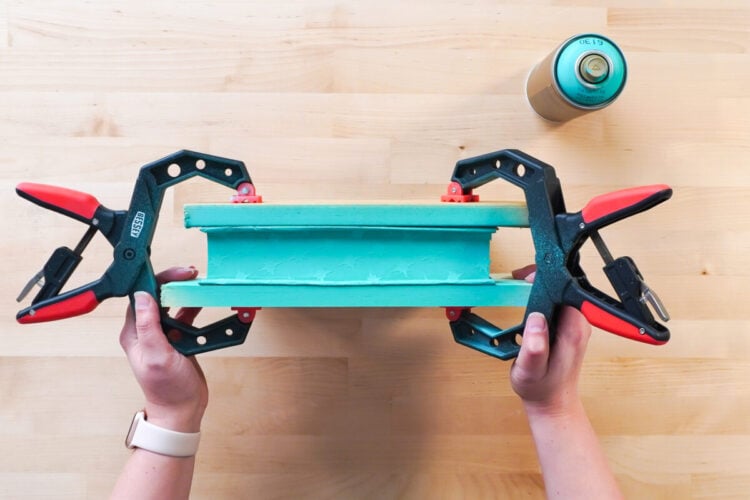
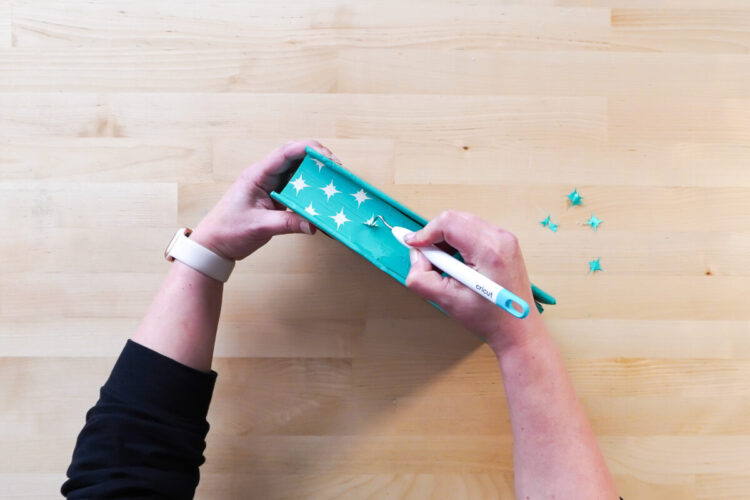



Comments & Reviews
E says
Do you use anything to seal the paint (a varnish or sealant I mean) once you’re done, or do you find that’s not necessary?